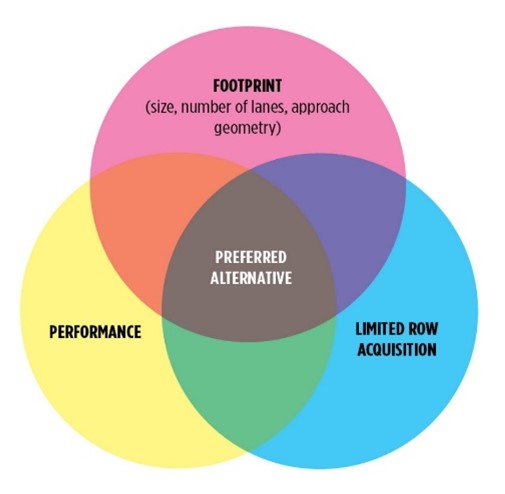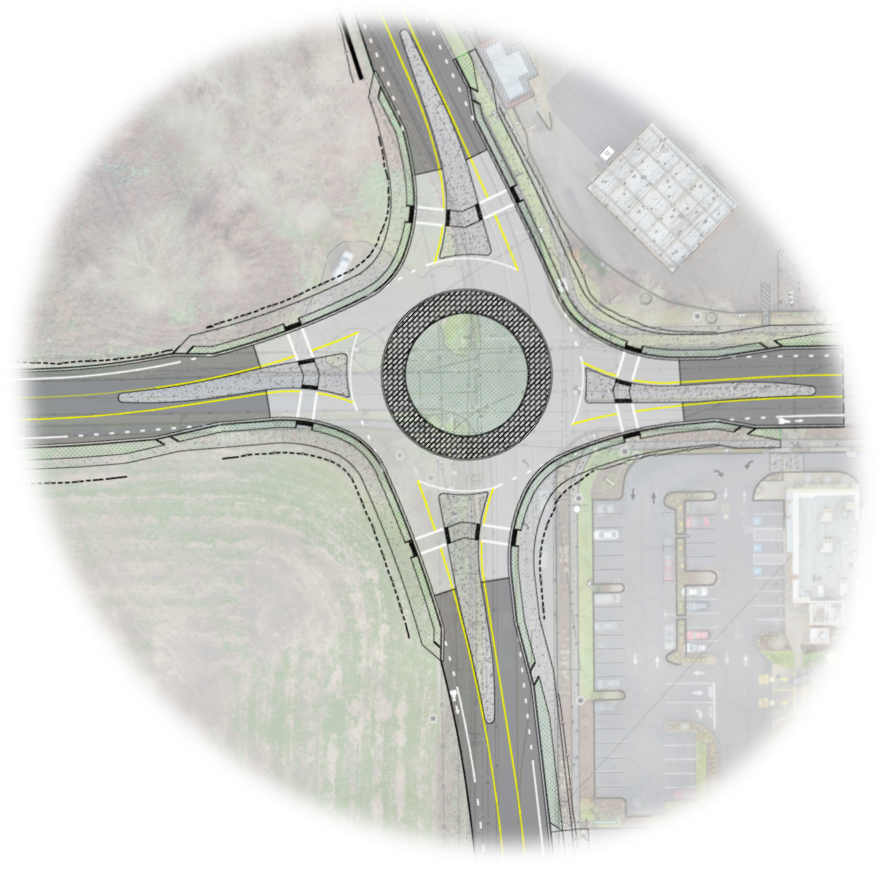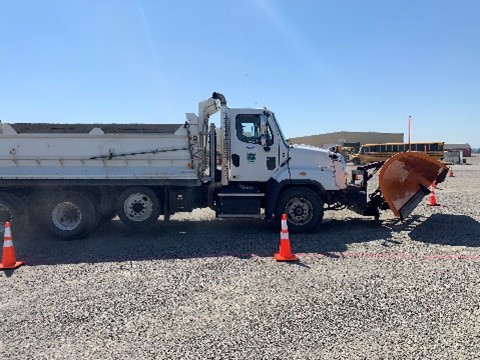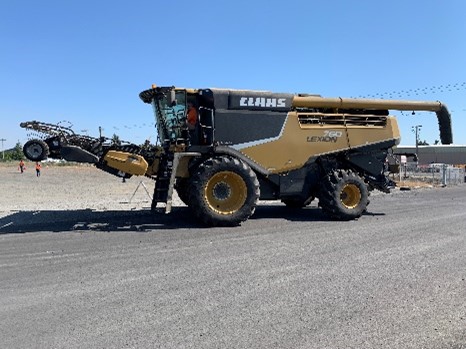September 16, 2022
There is an adage in engineering that anybody can design a bridge, but it takes an engineer to barely design it. The same is true for roundabouts. While roundabouts are not new, with thousands already in use across the U.S.-see our Roundabouts Database for more-each one represents a unique balance between the amount of vehicles passing through, bike and pedestrian considerations, large vehicle accommodations, site constraints, and intersection geometry. Despite the widespread use and adoption of this safe and efficient intersection type, many communities still hesitate to implement roundabouts due to the perceived dangers and unknowns.
 As engineers, we do our best with the tools we have at our disposal to calculate the fastest vehicle paths through the roundabout, targeting speeds no greater than 25 to 30 mph. We model large vehicles in Computer-Aided Design and Drafting (CADD) software to make sure a range of vehicle types can safely navigate the roundabout without off-tracking onto the sidewalk or through the landscaping. We check sight lines closely to ensure that drivers can see approaching cars, pedestrians, and cyclists. However, it is sometimes difficult for stakeholders to translate a two-dimensional plan into an understanding of how the roundabout will work for them and their unique needs.
As engineers, we do our best with the tools we have at our disposal to calculate the fastest vehicle paths through the roundabout, targeting speeds no greater than 25 to 30 mph. We model large vehicles in Computer-Aided Design and Drafting (CADD) software to make sure a range of vehicle types can safely navigate the roundabout without off-tracking onto the sidewalk or through the landscaping. We check sight lines closely to ensure that drivers can see approaching cars, pedestrians, and cyclists. However, it is sometimes difficult for stakeholders to translate a two-dimensional plan into an understanding of how the roundabout will work for them and their unique needs.
Making sure the shoe fits
 For communities contemplating their first roundabout, a truck rodeo can be a great tool for building support and addressing the concerns of freight haulers, farmers, and other users. The event invites the community to come and test a full-size replica of the roundabout in a controlled environment. The project team “builds” the actual roundabout in a large parking lot using traffic cones, temporary chalk, and sandbags. The cones represent the vertical curbs, the sandbags are the truck apron, and the chalk connects them-borrowing a field chalk machine from the local high school can help you mark smooth lines on the ground. A surveyor provides the layout so the roundabout shape and approach lanes are as precise as possible.
For communities contemplating their first roundabout, a truck rodeo can be a great tool for building support and addressing the concerns of freight haulers, farmers, and other users. The event invites the community to come and test a full-size replica of the roundabout in a controlled environment. The project team “builds” the actual roundabout in a large parking lot using traffic cones, temporary chalk, and sandbags. The cones represent the vertical curbs, the sandbags are the truck apron, and the chalk connects them-borrowing a field chalk machine from the local high school can help you mark smooth lines on the ground. A surveyor provides the layout so the roundabout shape and approach lanes are as precise as possible.
Saddling Up in Stayton
Kittelson recently partnered with the City of Stayton, Oregon, to hold a truck rodeo for a roundabout being designed for the intersection of Golf Club Road and Shaff Road.
We wanted large vehicle drivers to give it a try, so we reached out to the following:
- The Fire Department (ladder truck and engine). Once firefighters knew their trucks would easily navigate the roundabout, they used the rest of their timeslot for driver training, making multiple passes through the roundabout.
 County Snowplow operators. We held the Rodeo in the heat of summer. The County used the event to practice installing their snow-removal equipment.
County Snowplow operators. We held the Rodeo in the heat of summer. The County used the event to practice installing their snow-removal equipment.- Local Industry. A standard 18-wheeler, moving vans, and a tow truck were sent through the test roundabout. Each of these operators came to Rodeo with confidence that their trucks would work, but they appreciated the opportunity to test it out.
- Specialty Users. There is a local glulam beam manufacturing facility in Stayton. Their hauling truck expanded out to 100 feet long (30 feet longer than a standard 18-wheeler). Fortunately, they don’t make turns at the intersection, only traveling straight through.
 Farm Bureau. The Farm Bureau sent a 17-foot wide combine. The operator’s first comment was that he was going to destroy all the cones. However, he gave it an honest drive and only hit two cones at the entrance where the lane narrowed.
Farm Bureau. The Farm Bureau sent a 17-foot wide combine. The operator’s first comment was that he was going to destroy all the cones. However, he gave it an honest drive and only hit two cones at the entrance where the lane narrowed.
Each vehicle was given a 30-minute time slot to test the roundabout. When they arrived, we took measurements to document the vehicles so we could replicate them in modeling software. The drivers received instructions on the multiple turning movements and where they could turn around to re-enter the roundabout from multiple approach points. Video of the event, and the vehicles, can be found here.
As the vehicles maneuvered through the roundabout, we had a drone hovering above to record video. If necessary, staff guided drivers around the roundabout and identified any unexpected pinch points or off-tracking. One staff person rode in the cab with each of the drivers to get their real-time thoughts. Despite initial protests and opposition, skeptical drivers turned into satisfied drivers after making their way through the roundabout.
What we learned
While the rodeo raised overall awareness and provided educational points for key stakeholders, the engineering team was also able to learn and identify a few adjustments to the footprint that will better suit the community.
- For over-dimensional vehicles (e.g., 100-foot trucks), we will widen the truck apron – which allows large vehicles to navigate the roundabout without running into fixed objects or other motorists – on the northbound and southbound movements, creating an oblong center landscape island.
- For the farm equipment (17-foot-wide combine), we will make the approach splitter islands (separation between vehicles entering and exiting the roundabout) with mountable curbs and slightly wider lanes.
At the end of the day, the roundabout rodeo was a huge success. Local leaders and businesses could see the roundabout working, local users tested it, and the engineering team identified design revisions to make it work even better for the community.
For questions or comments, reach out to us at the contacts below.
City of Stayton
Lance S. Ludwick P.E.
Director of Public Works
lludwick@staytonoregon.gov
Kittelson & Associates
Tony Roos, P.E.
Principle Engineer
troos@kittelson.com
